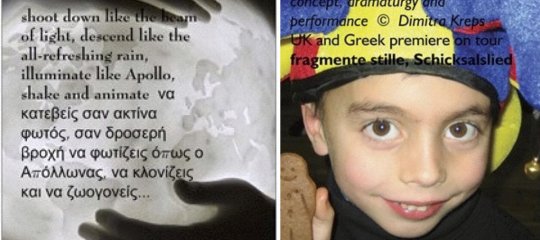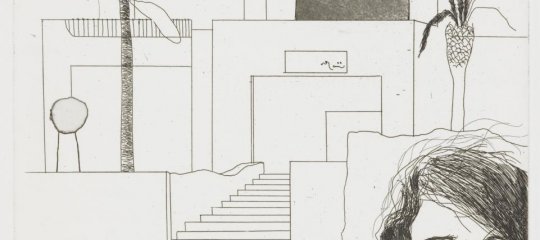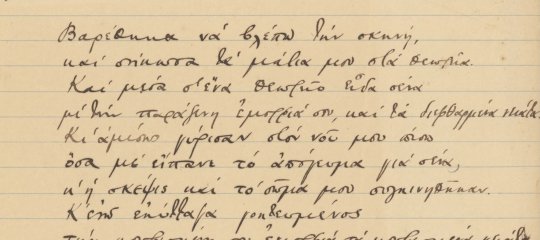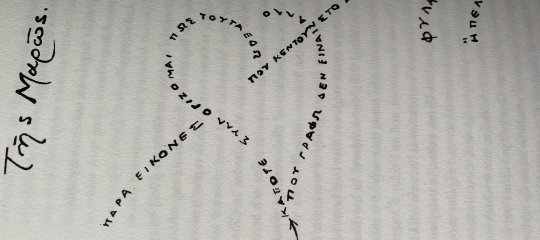Grecolandia
Federica Ferrieri
Το Grecolandia είναι πρότζεκτ με σκοπό τη διάδοση της νέας Ελληνικής γλώσσας και του σύγχρονου Ελληνικού πολιτισμού στα Ιταλικά δημοτικά σχολεία.
Προορίζεται για την τελευταία τάξη του Δημοτικού (παιδιά 10-11 ετών), στην οποία διδάσκεται για πρώτη φορά η αρχαία Ελλάδα (κυρίως ως προς την ιστορία, αλλά γίνονται συχνές νύξεις και στην αρχιτεκτονική της ακρόπολης, τη γέννηση της φιλοσοφίας, κτλ.).
29 Σεπτεμβρίου 2009
Το Grecolandia παρέχει λοιπόν τη δυνατότητα να συμπληρωθεί από την πρώτη εμφάνισή της η εικόνα της Ελλάδας που παρουσιάζεται, η οποία είναι ελλειπής, καθώς τείνει να είναι αποκλειστικά αρχαιολογική. Επίσης, η σχολική πολιτική του Ιταλικού Υπουργείου ενθαρρύνει για λόγους πολυπολιτισμικότητας την εισαγωγή της διδασκαλίας πολλαπλών ξένων γλωσσών στο Δημοτικό σχολείο, και η περίπτωση των νέων Ελληνικών φαίνεται ειδικά ευνοϊκή: πρώτον, γιατί, όπως είπαμε, τα παιδιά αρχίζουν να μαθαίνουν για την Ελλάδα από τα βιβλία τους και έτσι μπορούν να καταλάβουν ότι ο Ελληνικός πολιτισμός συνέχισε και μετά από τον Μεγαλέξανδρο, ότι η Ελληνική γλώσσα υπάρχει και μιλιέται ακόμα, κι επίσης ότι ο σύγχρονος πολιτισμός παρουσιάζει πολλά ενδιαφέροντα σημεία· δεύτερον, γιατί ο Ελληνικός πολιτισμός, αρχαίος και νέος, βρίσκεται πολύ κοντά στον Ιταλικό, και η μελέτη του μας βοηθά να καταλάβουμε τα (γνωστά ή ακόμα άγνωστα) σημεία επαφής· τρίτον, επειδή η εκμάθηση ελληνικών λέξεων – έστω των πιο εύκολων – βοηθά στην ερμηνεία πολλών ιταλικών λέξεων, που τα παιδιά συναντούν μελετώντας τη γεωμετρία, τις φυσικές επιστήμες, κτλ.
Το Grecolandia ξέκινησε το 2008 χάρη στη συνεργασία με τη Δρ. κ. Beatrice Vallini, που διδάσκει στο Δημοτικό σχολείο “Villa Medico” του Zelarino-Βενετία. Η κ. Vallini μου πρότεινε να οργανώσουμε ένα μάθημα για τους μαθητές της που θα τους έδινε τη δυνατότητα να εμβαθύνουν τις γνώσεις τους για την Ελλάδα. Εγώ σκέφτηκα ότι θα μπρούσαν να συμμετάσχουν στο πρότζεκτ και οι πιο προχωρημένοι φοιτητές της Έδρας Νέων Ελληνικών του Πανεπιστημίου της Padova (όπου είμαι ερευνήτρια και διδάσκω την Ελληνική γλώσσα): ξεκίνησα λοιπόν ένα εργαστήριο (workshop) που διάρκησε σχεδόν δύο μήνες (38 ώρες συνολικά), κατά το οποίο σχεδιάσαμε το μάθημα που έπρεπε να παρουσιάσουμε στους μικρούς μαθητές.
Το μάθημα πραγματοποιήθηκε την 28η Νοεμβρίου 2008, διάρκησε τέσσερις ώρες και μοίαζε με μεγάλο παιχνίδι για τον Ελληνικό πολιτισμό. Ξεκινώντας από το μύθο του Θησέα και του Μινώταυρου, που τα παιδιά ήδη ήξεραν, έλαβε χώρα ένα ταξίδι στο χρόνο που μετέφερε τον Θησέα από την αρχαία στη σύχγρονη Αθήνα, όπου όλα ήταν καινούργια κι έπρεπε να τα μάθει μαζί με τους μαθητές. Χωροί, παιχνίδια, διασκεδαστικοί διάλογοι συνόδεψαν τα παιδιά στην πρώτη τους επαφή με το περίπτερο, το κομπολόι, τους Ελληνικούς αριθμούς και το Ελληνικό φαγητό.
Τα αποτελέσματα (σύμφωνα με τους ίδιους τους μαθητές αλλά και με τους δασκάλους) ήταν ιδιαίτερα θετικά και φέτος άλλο ένα σχολείο μας ζήτησε να εφαρμόσουμε το ίδιο πρόγραμμα σε 8 καινούργιες τάξεις.
Όλο το Grecolandia δημοσιεύτηκε on line: στην ιστοσελίδα http://www.maldura.unipd.it/dllags/segdidcs/neogreco/index_grecolandia.htm (προσωρινά μόνο στην ιταλική γλώσσα).
Μπορείτε να δείτε το λεπτομερές πρόγραμμα του Grecolandia, την αφίσα που είχαμε προετοιμάσει, τον πίνακα με όλα τα μέρη της δουλειάς μας, το βιβλιαράκι που δημιουργήσαμε για τα παιδιά, όλες τις φωτογραφίες του εργαστηρίου και του μαθήματος, κι επίσης το βίντεο της θεατρικής παράστασης που οργάνωσαν τα παιδιά για το τέλος του σχολικού έτους και στην οποία ήθελαν να εισαγάγουν επίσης το συρτάκι και ένα Ελληνικό τραγούδι που είχαν μάθει μαζί μας. Τιμή μας λοιπόν!
- Εισέλθετε στο σύστημα για να υποβάλετε σχόλια











